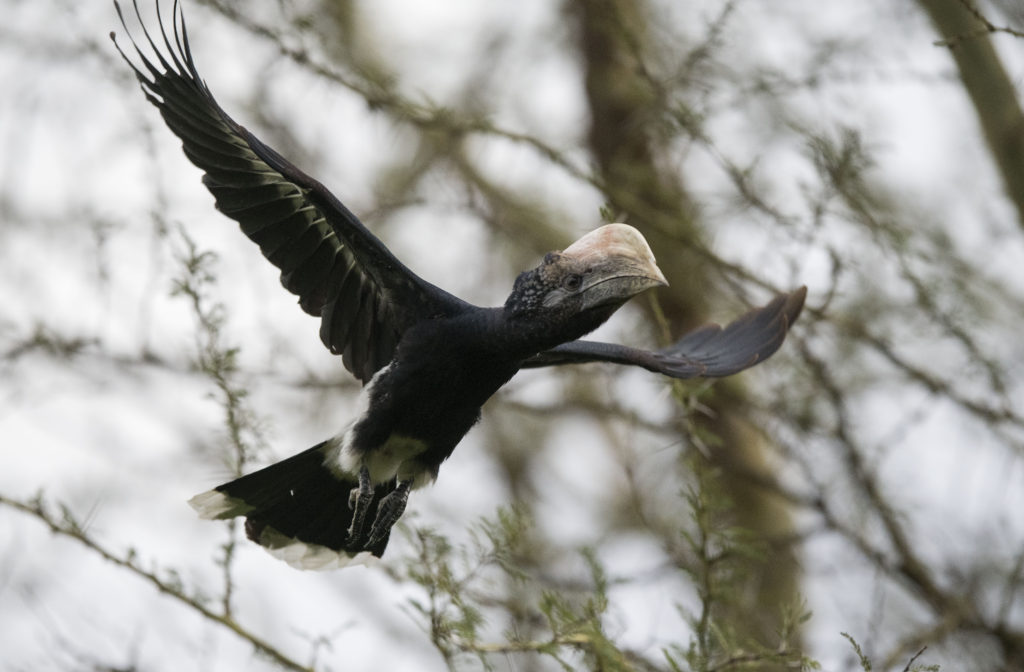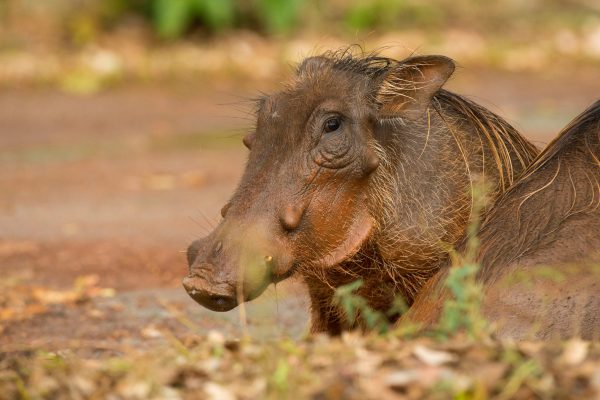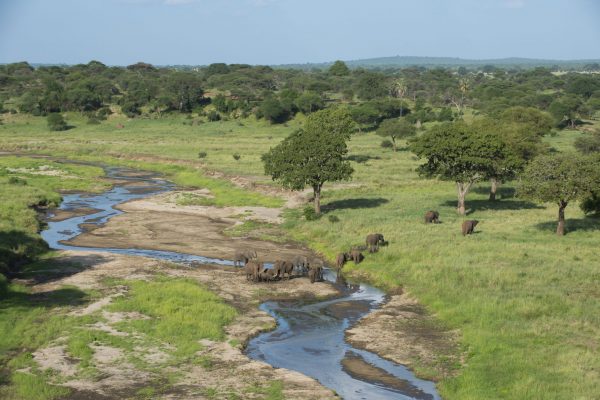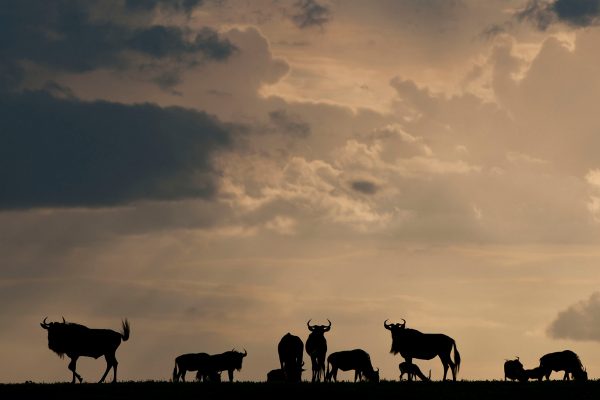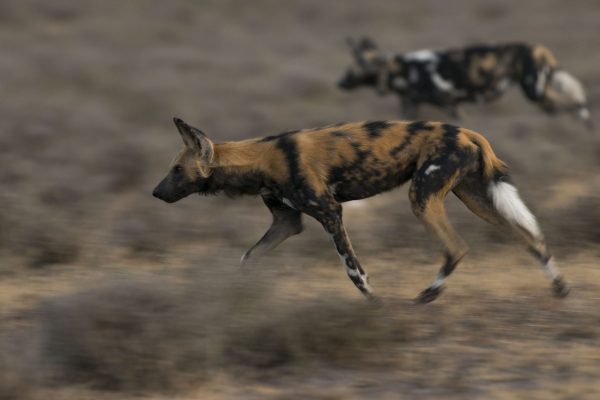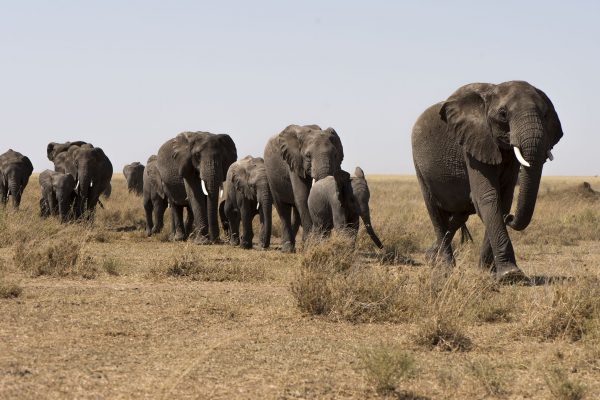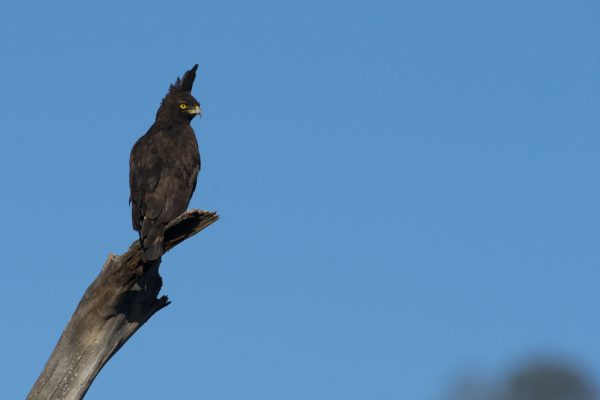Overview
Being one the least visited national parks in the North of Tanzania, Tarangire National park has become one of the most sought out destinations for guests who wish to marvel at nature at its true sense in better exclusivity of human interference. Ever since its inception in 1970, a greater reward to this exclusion from adverse human activity within and around its vicinity has been a grace to the resident natural flora and fauna that is always seen thriving year-round.With an estimated area of 2,850 km2, Tarangire’s landscape is defined by granitic ridges, grassy plains, river valleys, and swamps. The park extends into two game-controlled areas and the wildlife can move freely throughout. Every fold and crease of this stupendous topography serves as home to a rich wealth of biota, some native only to the park. The perennial Tarangire river that runs right across from the south to the north of the park, is the line of which all life holds dear to in the direst times of the year providing a source of fresh water for the extensive ecosystem.
Deep underneath, colonies of small underground miners create networks of tubes and tunnels and expand further outwards in creating gigantic mounds that are seen to dominate vast parts of the grassy plains. Remains of these termite mounds are often frequented by colonies of the endearing dwarf mongoose that make home and pairs of red-and-yellow barbet that nests and roost in the tunnels.
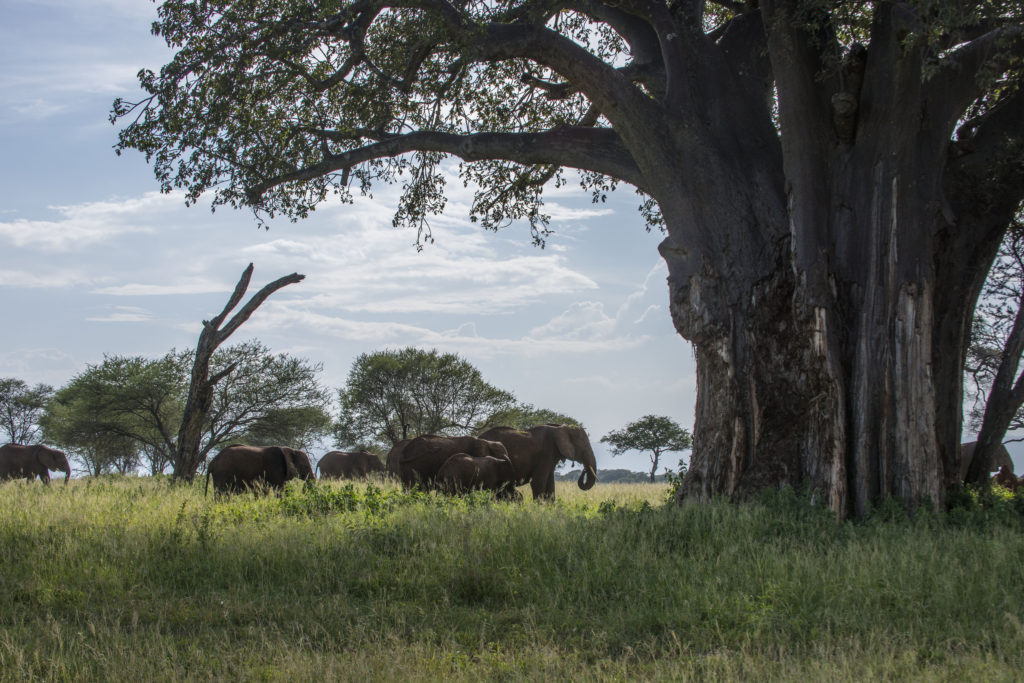
The vast expanse of the Tarangire ecosystem consists of grasslands, floodplains and gently rolling hills of wooded savannah. Early wake up calls from giant ant-eaters are commonly sighted on the large red-clayed termite mounds in the mornings as they fend for breakfast before walking off into the long elephant grass that presides the grassy vegetation. This grass carpet, which extends into most of the savannah and the combretum woodland, forges both home and food for all large and small autotroph eaters. During and after the rainy season, what was once dry, coarse and scanty vegetation is replenished into crisp silvery green verdure which is a favorite for the large herds of the savannah grazers and browsers of Tarangire. The most prevalent types of woody vegetation are Acacia woodlands in the drainage lines and Commiphora‐Combretum deciduous woodlands on the uplands. Along the Tarangire river, a wealth of riverine forest vegetation thrive hosting numerous numbers of wild and birdlife. During the fall, the riverine trees shed their leaves and create a sumptuous color feast, that a capital city inhabitant cannot easily imagine to be so close to.
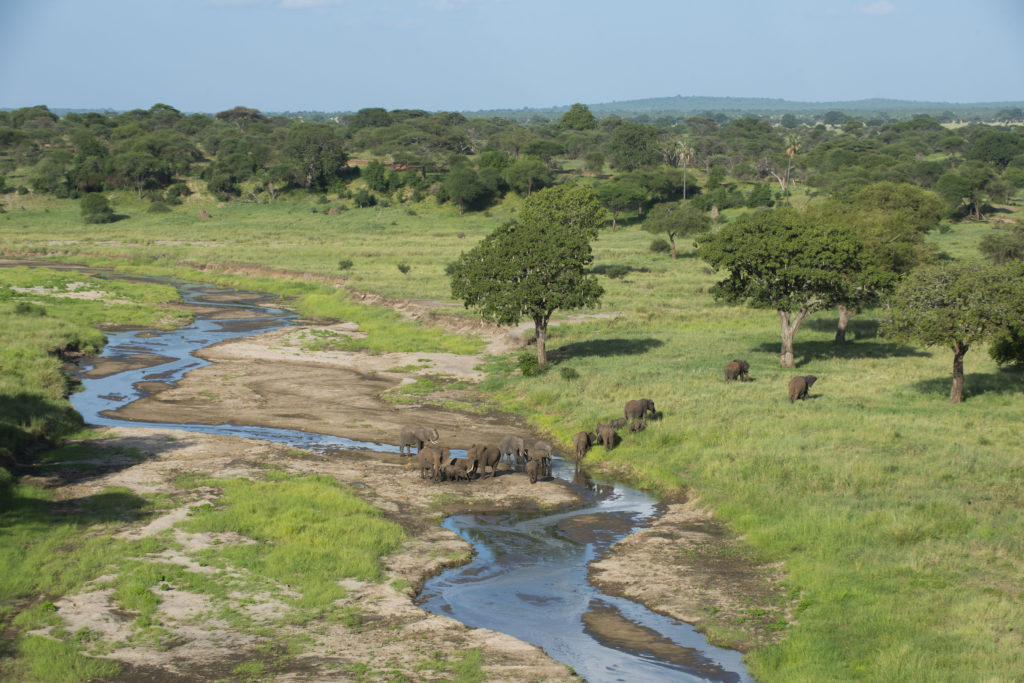
Over the months of June to November, when the Savannah is on its driest phase, large herds and individuals of the Tarangire plant eaters slowly migrate into the river valleys where the last bit of green vegetation still thrive and down into the permanent Tarangire river, of which the park is named after, for a drink and plunge to cool off from the halting sun. Some of the antelop and gazelle speciaec founf in these lands include – hompson’s gazelles, impalas, elands, buffaloes, hartebeests, wildebeests, reedbucks, greater and lesser kudu, the illusive gerenuk and fringe-eared Oryx. On drier ground, the Kori bustard, the heaviest flying bird; the stocking-thighed ostrich, the world’s largest bird; and small parties of ground hornbills make playground.
Down the Tarangire rive, the ever-dominating crocodiles and hippopotamuses reside in the waters all year long. Over the rainy period, the seasonally flooded swamps and grassland cradle a huge variety of among the 550 bird species found in the park including the open-bill stork, African march harrier and black headed heron among many others.
Due to their unique concentration in this park, second to the Ruaha National park, the largest land giants are commonly seen rubbing shoulders with their giant leafy counterparts. The impressively tusked African Elephants that move in herds of over 20 individuals at a time can be spotted scratching against gigantic Baobab trees at they make their way through the savannah. And talking of these large pachyderms, Tarangire is host to not one but two rare natural grandeurs of an elephant giving birth to twins As you advance through, you will every so often be delighted by a journey of giraffes traversing their typical savannah, grassland and acacia woodland.
Fig trees that also exist among other large trees in the aquatic forest ribbon of the park, harbor the Tarangire’s tree climbing pythons, as do its lions and leopards, lounging in the branches where the fruit of the sausage tree disguises the twitch of a tail. Tarangire has gained a reputation of having the largest concentration of these Africa’s large serpents as compared to any other park in Tanzania. This band of the park is also a preferred nesting area among the over 550 bird species found in the park.
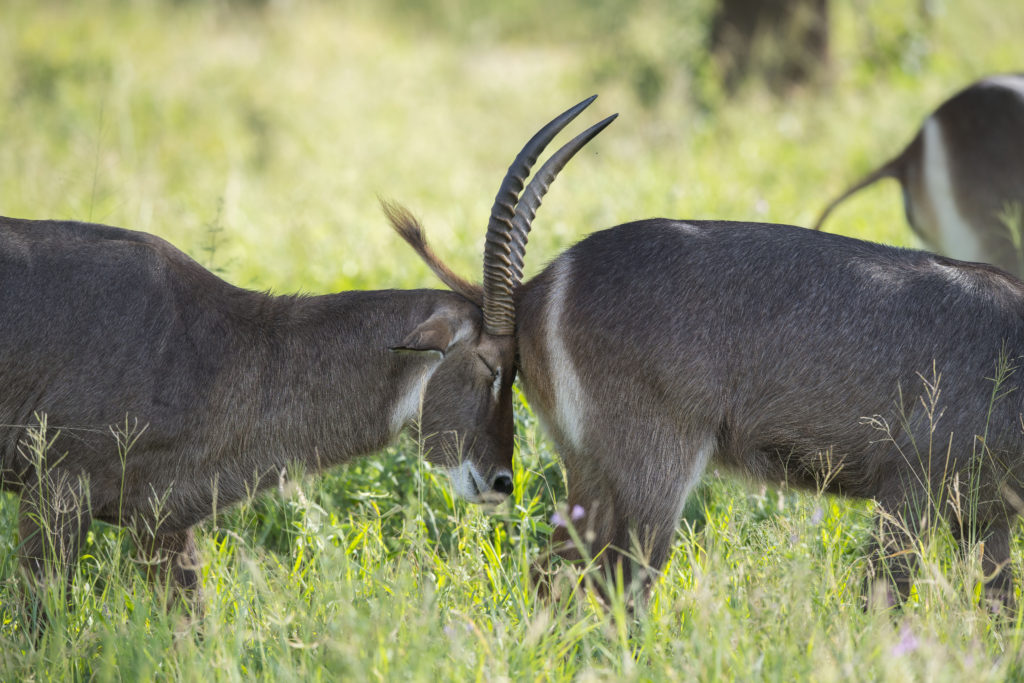
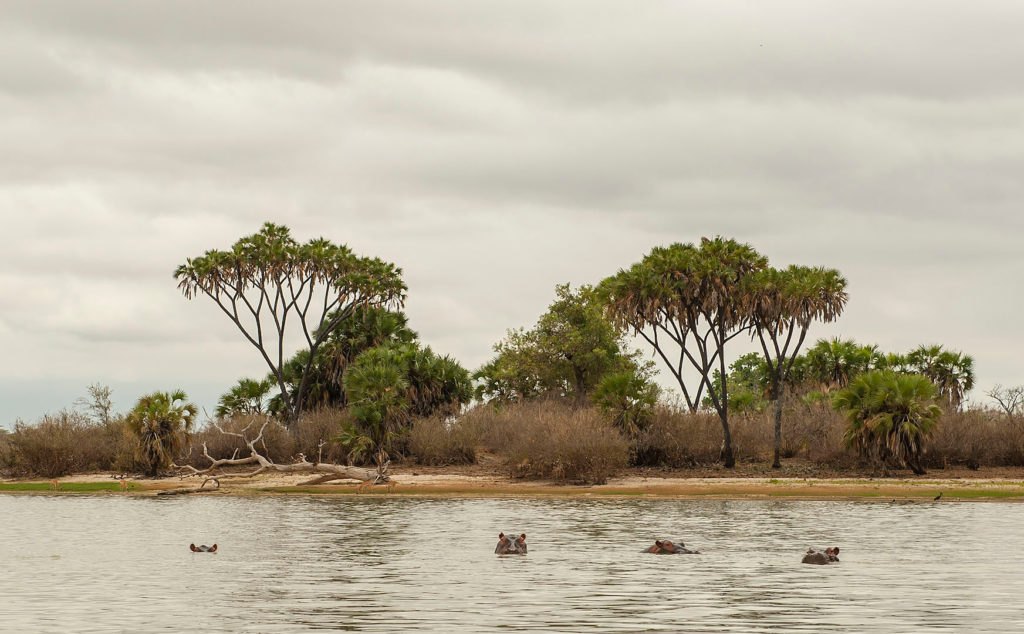
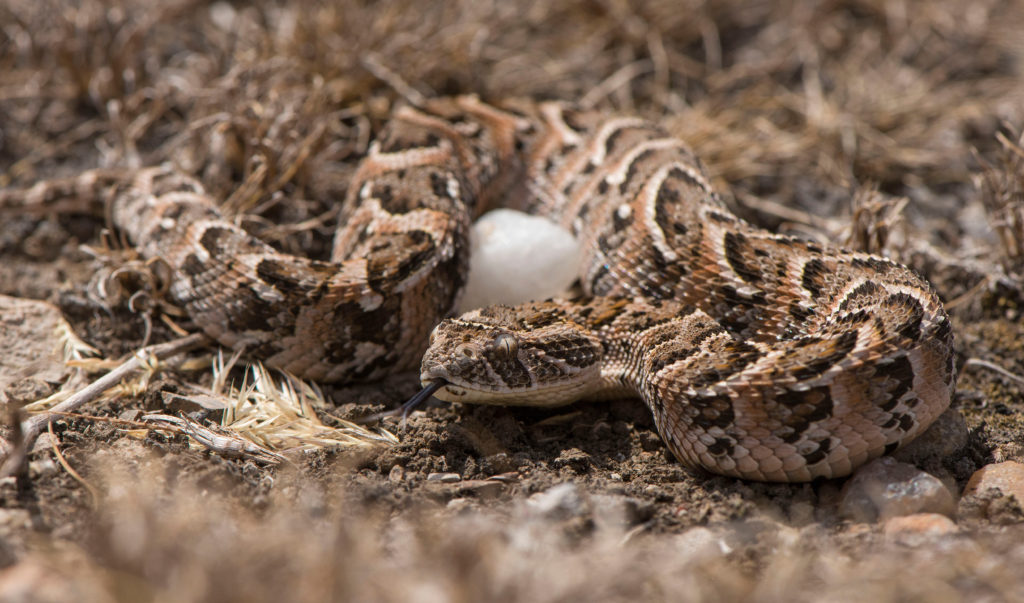
The park is characterized by two rainy seasons; November – December and March – May with the wettest month being April. The driest months are July, August and September. The warmest months are January, February and March, averaging 30 °C (86 °F) with the coolest months being June and July, averaging 25 °C (77 °F).
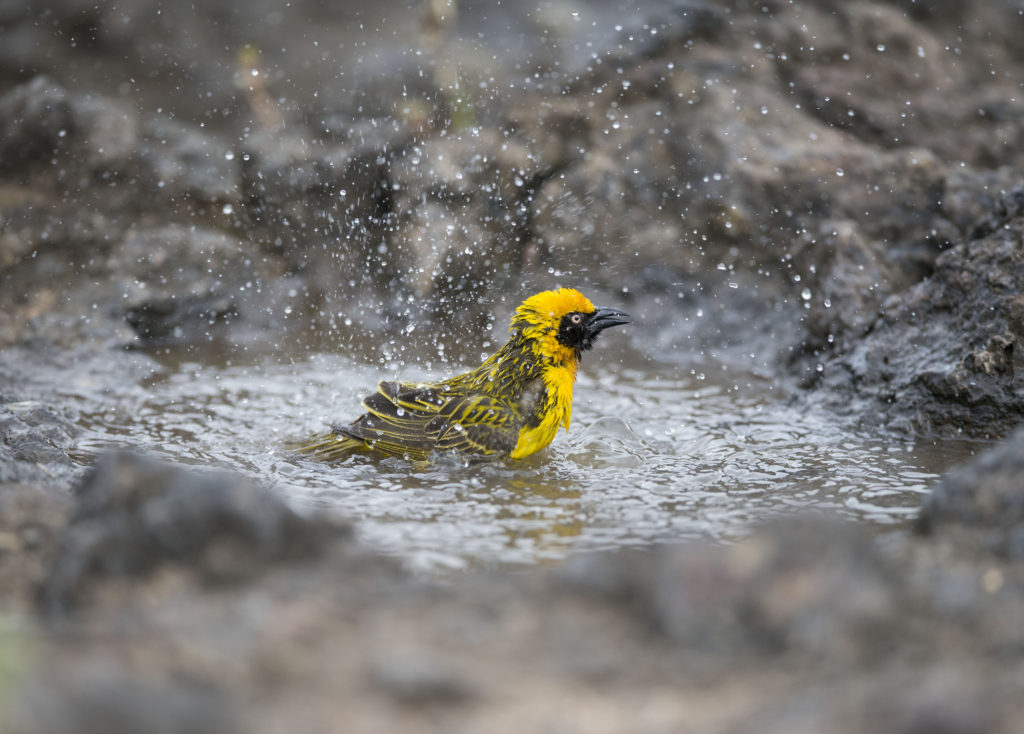
With a wide selection of types to choose from, accommodations in Tarangire range from luxurious safari lodges, opulent tented camps, lavish thatched bungalows, splendid cottages and chalets, to reasonably priced bush camps both within and around the vicinity of the national park. Most of these accommodations are designed and situated in flawless styling and locations that brew a sense of immersiveness in nature. Accommodations offer tailor-made services to appeal to the full comfort of their guests. They also offer various activities that the guests may love to engage in including nature walks, health and wellness treatments such as spa’s and gyms, participating in cooking and children’s activities.

- Hot Air Balloon safaris
- Day game drives
- Cultural visits to the local ethnic group bomas
- Tuktuk ride
- Quad biking
- Cycling
- Nature walks
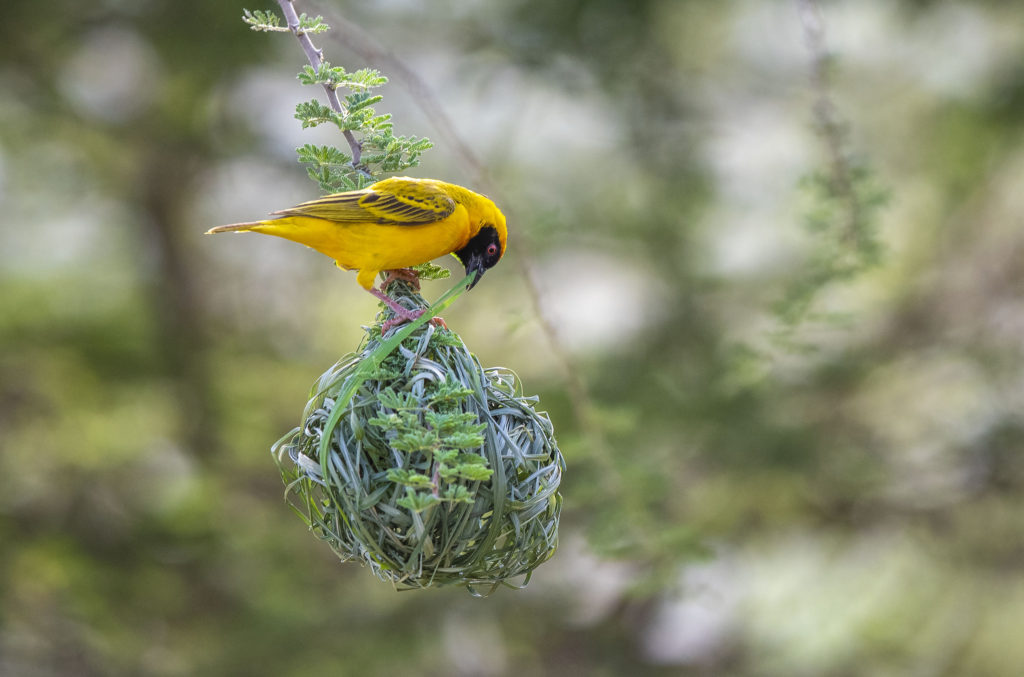
BY ROAD:
- Transfer time to / from Arusha: 2 hours (approx.)
- Transfer time to / from Ngorongoro: 2 hours 30 minutes (approx.)
- Transfer time to / from Kuro airstrip: 3 hours game drive (approx.)
- Transfer time to / from Kilimanjaro Airport: 4 hours(approx.)
BY AIR:
- Flight time to / from Kuro airstrip from / to Arusha airstrip: 25 minutes
- Flight time to / from Kilimanjaro airstrip from / to Kuro airstrip: 35 minutes
